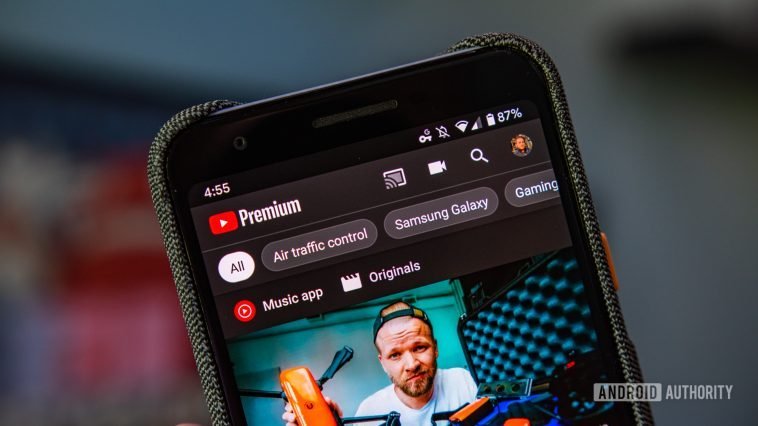Introduction.
When you’re running an eCommerce business, one of the biggest challenges is standing out in a crowded market.
People are scrolling endlessly through social media, shopping online, and consuming video content like never before.
Among all the options for advertising, YouTube is one of the most powerful platforms to connect with potential customers.
Why? Because people are actively searching for content they care about, and when your ad is placed in the right spot, it grabs attention.
In this post, I’ll break down how to run YouTube ads for your eCommerce business. From why YouTube ads matter to the types of ads you can use, and finally, how to set them up step by step, you’ll leave knowing exactly how to get started.
Plus, I’ll answer some of the most common questions about running YouTube ads effectively.
Why YouTube Ads Are a Game-Changer for eCommerce
YouTube is the second most-visited website in the world, with over 2 billion logged-in monthly users watching a billion hours of video daily.
People go there to learn, be entertained, or solve problems, which makes it the perfect place for eCommerce businesses to showcase their products.
Here are a few reasons YouTube ads are worth your time and budget:
- Visual Impact: Video ads let you show off your product in action, highlighting features that a static image just can’t capture.
- Targeting Options: YouTube allows you to target specific audiences based on interests, demographics, or even the keywords they search.
- High ROI Potential: When done right, YouTube ads can deliver a significant return on your investment. For example, 70% of viewers say they bought a product after seeing it in a YouTube ad.
- Cost-Effective: Unlike traditional TV commercials, you only pay when someone watches your ad (more than 30 seconds or interacts with it).
Types of YouTube Ads
There are several types of YouTube ads, and each works differently. Here’s a quick overview:
- Skippable In-Stream Ads: These are the most common. They appear before, during, or after a video and can be skipped after five seconds. Perfect if you want to tell a story but give viewers the choice to continue watching.
- Non-Skippable In-Stream Ads: These ads are shorter, up to 15 seconds, and cannot be skipped. They work best for strong, impactful messages.
- Bumper Ads: These are super short (six seconds max) and are great for driving brand awareness.
- Discovery Ads: These appear on YouTube search results or as recommended videos. They’re ideal for promoting content like tutorials or product demos.
- Masthead Ads: These are premium ads that appear on the YouTube homepage, perfect for massive product launches or big campaigns.
How Do I Run YouTube Ads For My eCommerce Business?
1. Set Up a Google Ads Account
Since YouTube is part of Google, you’ll need a Google Ads account. Head over to Google Ads and set one up. It’s free to create an account, but you’ll need to add payment details to run campaigns.
2. Define Your Goal.
What do you want to achieve with your ads? Common goals include:
- Driving traffic to your website.
- Increasing brand awareness.
- Boosting sales.
Knowing your goal will help you design the right ad and measure success.
3. Identify Your Target Audience.
YouTube’s targeting options are one of its greatest strengths. You can target audiences based on:
- Demographics: Age, gender, income, parental status.
- Interests: Hobbies, shopping habits, etc.
- Behavior: How often they interact with certain types of content.
- Keywords: Words or phrases they search for.
For example, if you’re selling eco-friendly home products, you could target people interested in sustainability or green living.
4. Create Compelling Video Content
You don’t need a Hollywood-level production, but your ad must be engaging. Show your product in action, use testimonials, or highlight its unique features.
Keep your messaging clear and focus on how your product solves a problem or improves the viewer’s life.
5. Set Up Your Campaign
Here’s a quick walkthrough:
- Go to Google Ads and click “New Campaign.”
- Choose your campaign goal (e.g., website traffic or sales).
- Select “Video” as your campaign type.
- Set your budget and bid strategy.
- Pick your audience targeting options.
- Choose where your ads will appear.
- Upload your video ad.
6. Monitor and Optimize.
Once your ads are live, don’t just sit back and wait. Use the analytics in Google Ads to track performance. Look at metrics like:
- View rate: How many people watched your ad.
- Click-through rate (CTR): How many clicked on your ad after seeing it.
- Conversion rate: How many people took action (e.g., purchased something).
If something isn’t working, tweak it. Change the targeting, try a different type of ad, or improve your video content.
FAQs
1. How much does it cost to run YouTube ads?
The cost depends on your targeting and bidding strategy. Most advertisers spend between $0.10 and $0.30 per view, and you can set daily budgets to control spending.
2. Do I need a professional video to run YouTube ads?
Not necessarily. While a polished video can help, authentic and relatable content often performs just as well. Many successful ads are filmed with smartphones.
3. How long should my YouTube ad be?
It depends on the type of ad. For skippable ads, aim for 15–30 seconds. For non-skippable ads, you’re limited to 15 seconds. Keep bumper ads at six seconds or less.
4. Can I target specific keywords with YouTube ads?
Yes! Keyword targeting is a great way to ensure your ad reaches people searching for content related to your product.
5. How do I measure success with YouTube ads?
Track metrics like view rate, CTR, and conversions. Set clear goals from the start, so you know what success looks like.
Conclusion
YouTube ads are a powerful tool for growing your eCommerce business. They let you reach millions of potential customers while showcasing your products in creative ways.
With the right strategy, you can drive traffic, boost sales, and build lasting connections with your audience.
What’s your biggest challenge when it comes to running YouTube ads? Let me know in the comments below—I’d love to hear your thoughts!





GIPHY App Key not set. Please check settings